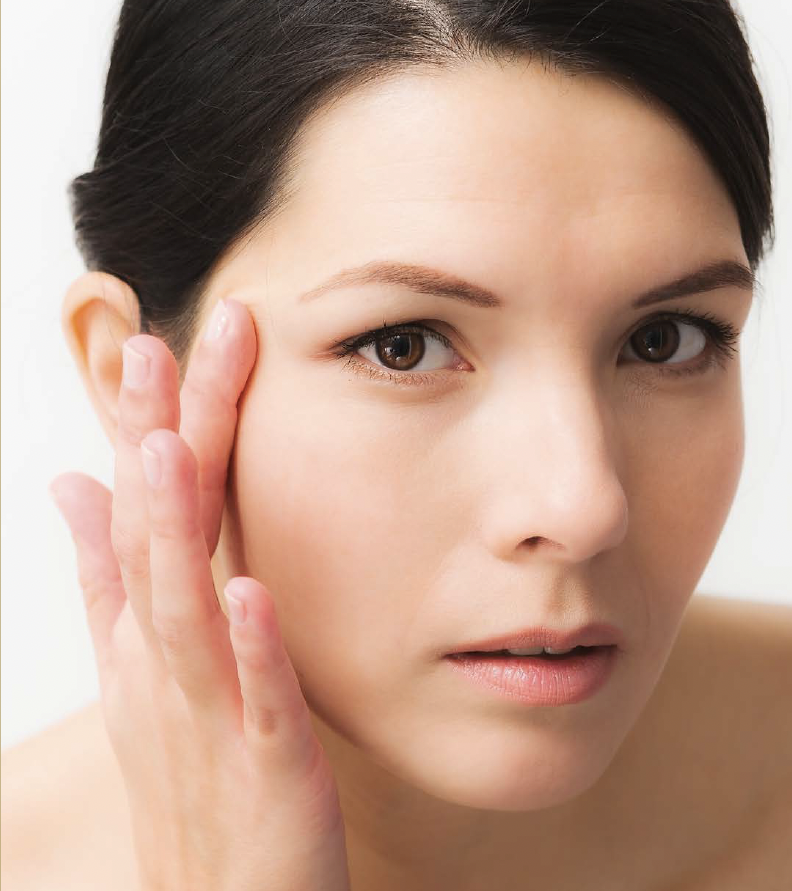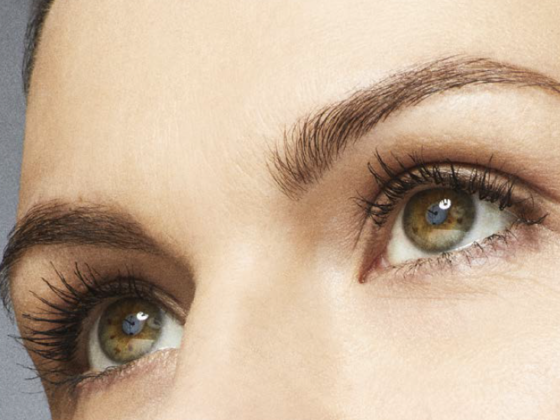Dr Séverine Lafaye
Dark circles are areas of brown or blueish pigmentation under the eyes
 We must differentiate between the various types of eye circles:
We must differentiate between the various types of eye circles:
– Dark pigmentary circles around the eyes.
These primarily appear in dark phototypes and are connected with excess melanin in the epidermis and dermis. Congenital or ethnic, they often run in families and can affect both the upper and lower eyelids, or the whole or just the inner part of the lower eyelids.
– Vascular circles.
These appear in patients with fair skin. They affect the inner part of the lower eyelids and give a purplish or pink tinge to the translucent skin, with visible blood vessels. They are not the same as hollow eye circles, whose pseudo-pigmentation is due to shadows and disappears when light is shone directly on the face.
Treatments are available for each type of under-eye circles.
– To start with, we need proper hydration, plenty of sleep and to stop smoking because they can all aggravate the appearance of periorbital circles. Obviously, a balanced diet rich in fruit and vegetables, with plenty of vitamins and antioxidants, will help reduce inflammation and improve the skin quality.
– A good skincare routine using suitable creams or serums, with vitamin K but also vitamin C, caffeine or hyaluronic acid, combined with a complexion corrector are all recommended for reducing the appearance of dark circles.
– Sun protection is also important, with sunscreen and sunglasses used to prevent the damage caused by UV rays, which can accentuate dark circles.
– For a longer-term treatment for dark circles, and depending on the diagnosis made by the dermatologist, a specific treatment might be suggested.
For under-eye pigmentation, laser treatments help to eliminate the excess melanin in the epidermis. They can achieve quite spectacular and permanent results. However, you need to expect the healing phase to take a good week, with the downtime that goes with it. This type of treatment often leads to several weeks of post-inflammatory pigmentation, which can be camouflaged with make-up. The disappearance of these dark circles leads to an improvement in the patient’s quality of life and boosts their self-confidence, as the results achieved last a long time.
For hollow circles, injecting hyaluronic acid is highly effective when it is properly carried out. The dermatologist should always under-correct to ensure the results are as natural-looking as possible, and they last between 12 and 18 months, on average. In the event of over-correction, we can use diluted hyaluronidase, though in very small quantities due to the very rare risk of allergy.
To treat dark circles, we first need to adopt a healthy lifestyle, then use suitable dermocosmetics and seek expert treatments carried out by a doctor. When done properly, they remove any signs of fatigue in the face, making the results much appreciated in today’s image-driven society.
 Dr Séverine Lafaye: Dermatologist, Member of the scientific committee of the aesthetic and corrective dermatology group.
Dr Séverine Lafaye: Dermatologist, Member of the scientific committee of the aesthetic and corrective dermatology group.












